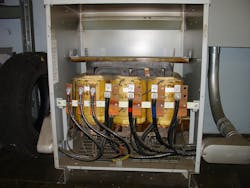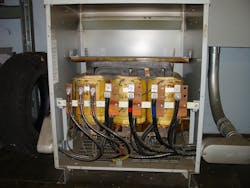Why Is the Transformer Neutral Grounded?
Most electricians understand that bonding and grounding is a priority when it comes to the safety of building wiring systems. They’re taught early on in their careers to fulfill the requirements of the National Electrical Code (NEC) when installing electrical equipment. However, many times the “why” behind the rules was never explained to these individuals. When it comes to bonding and grounding, it’s important to understand the why behind the NEC requirements in order to provide the best installations possible. Note: The NEC is the minimum requirement for safety and is not intended to be the best installation for all operational circumstances (Art. 90.1).
Specifically, let’s look at the reason for grounding a separately derived system — in this case, a transformer. The NEC requires these systems to be grounded, and most electricians adhere to this rule.
What happens when the manufacturer of a sensitive piece of equipment directs the electrician to not connect the equipment to the building’s grounding electrode system (GES)? This should raise a giant red flag to the electrician. If the NEC is the minimum requirement, then any design changes need to go beyond the NEC, not less than. Nevertheless, installations continue to be found where the electrician followed the manufacturers' requirements and left the equipment unsafe and the electrical system in peril.
In the Photo below, there is a major problem with the grounding of the transformer. See if you can spot it.The neutral (XO) bus has not been properly grounded and bonded to earth through the GES of the building. The manufacturer of the sensitive equipment directed the electrician not to connect the neutral to the building’s GES. This misunderstanding of grounding by manufacturers has led to mischaracterizing all grounding systems and the proper connections required. Grounding is blamed for misoperations and damage to the equipment when it is not the root cause. Unfortunately, more damage is caused by not abiding by the minimum requirements of the NEC.
In the case of this transformer, it was serving a sensitive machine that was damaged when an electric utility’s underground cable failed nearby. Due to the proximity of the building to the faulted cable, the potential in the earth was elevated for a few cycles until the cable fault was cleared. This was long enough to change the voltage potential between the transformer and the sensitive machine, lowering the voltage significantly and melting down contactors and relays from the higher current draw. Since the neutral was not grounded properly and the machine was not connected to the GES, the voltage became unstable. In addition, there is no low impedance path for fault current return if anything were to happen downstream of the transformer secondary.
Always maintain the minimum requirements of the NEC for safety and operability. Consult IEEE standards when additional design considerations are required. Also, explore the reason why you are constructing per the NEC. If you discover the reasons, then you will be able to spot the misinformation in the industry and avoid installations like this.
About the Author
Bryan Glenn
Power Quality Consultant
Bryan Glenn is a power quality consultant for EC&M magazine. He can be reached at [email protected].

